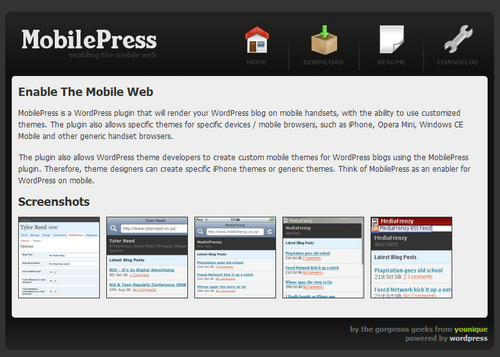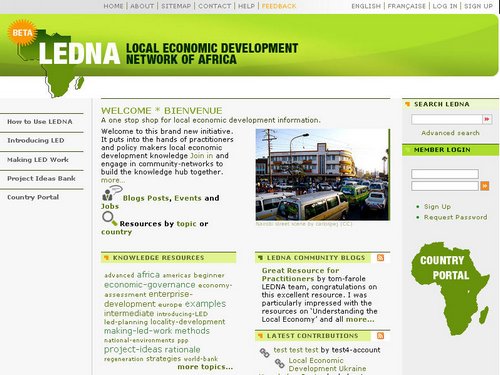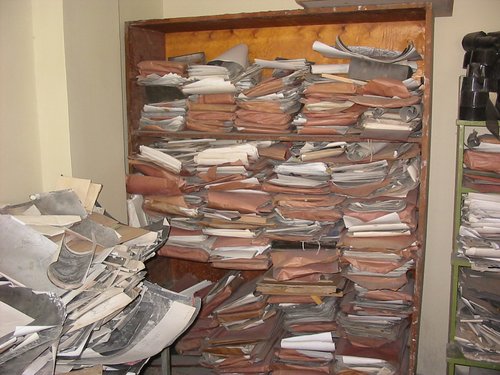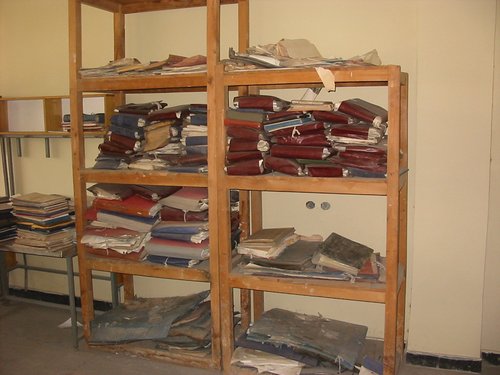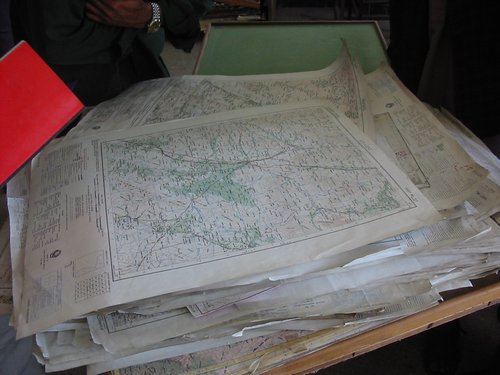Working as an external consultant, I really needed to reorganize my personal organiser and put it in a much more effective combination.
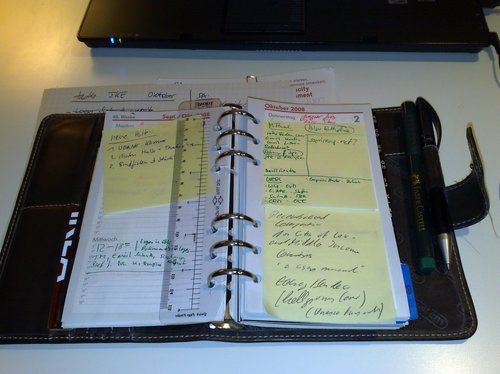
my old personal organiser
Imagine I’ve been using this traditional filofax (“file of facts”) system for the last 10 years and often didn’t have enough space to keep my notes. Plus, I am one of those folks who write down every little idea and try to keep the rest in my head.
Computers? PDAs? Mobile Phones? Well…as long as there’s no perfect solution that will synchronise any mobile phone with any adress book & notes and any corporate-restricted MS-Exchange Server and other services (= no common standard, sigh), I’ll keep on using paper – and besides: it’s faster and will never run out of batteries.
Having said that, what I am actually looking for is a system that a) provides enough room for my extra notes (e.g. a clamp somewhere where I can just attach them) and b) provides the maximum space without keeping me from writing on the left page because of a stupid six-ring loose-leaf binder system as seen on my old filofax above.
Proper time management certainly does not only depend on the perfect personal organiser, but for me, it starts with it.
And fancy Moleskine notebooks?
No. They just don’t do it for me even though they are quiet sexy, slim and have enough followers who love them. Moleskine notebooks are a 1-year solution to me. And yes, I know that some ppl just like it that way and keep their Moleskin archives on their shelves or hidden in drawers.
As far as I am informed, there are currently three different products available on the German market that offer a solution to my problem:
1. Fellow blogger Christian already recommended a very nice product from Germany which is sold under the brand name “Roter Faden” (~ red line) and which uses aluminium clamps on both sides to fix up to three special books inside:

Their website is unfortunately only available in German and with around 50,- EUR for an empty planer (special booklets containing a weekly calendar, address book & empty paper is sold seperately), it’s one of those solutions you’ll only go for once you’re sure it works for you.
There are only two official dealers for this system in Frankfurt and I am yet to see it in live action. I already like the mechanism that allows a quick removal of the content and – the biggest and most important advantage over to the traditional filofax solution: you can actually use all space as there’s no stupid ring binder in the middle. Sweet!
Another advantage is that you have an extra pouch for important papers, although rather rudimentary. Any disadvantages? Well…the more you stick inside it, the bigger it grows. Do I want my organiser to look like Dan Eldon’s sketchbooks? Well…. :-)
2. Then there’s the X47 system developed by another German who initially built his first prototype way back in the 1980s as a student and some years later on recycled his idea and improved it.
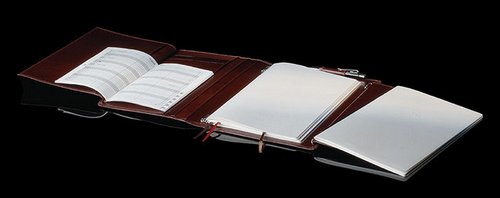
If I had enough money, I’d probably go for one of the X47 solutions as they are the most beautiful planers I’ve ever seen.
This so-called book-by-book system also uses a special spring mechanism (“spring loaded spine rail”) that holds these extra booklets in place and replaces the usual ring mechanism. While there are different sizes available (even some inside a wallet!), I’ve figured that I should switch to an A5 format which provides enough room for my extra notes that I still want to clip into this planer. Contrary to conventional filofax systems or even the RoterFaden solution above, these timers will not grow in size. Nice! The name X47 actually comes from the fact that the missing ring mechanism provides 47% more paper space.
If you’re seriously interested in getting a perfect GTD-solution, this could be your personal organiser (albeit prices are somewhere between 100,- – 300,- EUR!).
3. The same guy who invented the X47 system knew that his system is a bit too expensive for the average customer (heck, I could even get a Netbook for that price!), so he tried to look for another, cheaper solution based on…. rubbers!
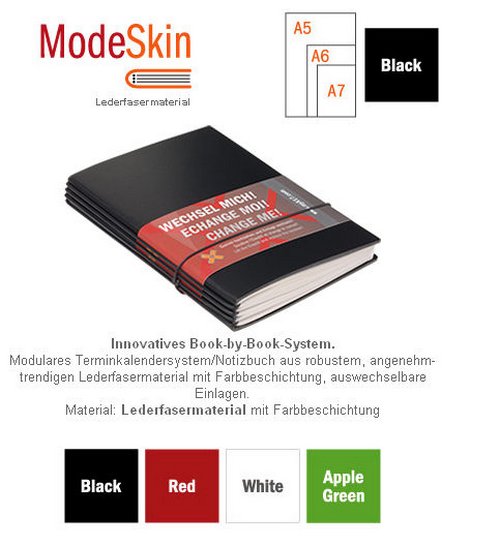
Instead of an expensive spring loaded mechanism, these rather simple organisers are held together by a set of rubbers. The inventor actually patented the system and got a patent on “a half hole” – which are required at the side of the organisers to keep everything in place. Check out their website for more info on this simple setup. Obviously, this is one sweet Eurogadget :-) solution I’ll like!
So I bought it.
I actually just bought the papers inside and these special rubbers (which are normally used as gaskets in the automobile sector, so they are quite durable) because they didn’t have the cheap cover edition I was actually longing for and because I had already made up plans on how to modify this solution according to my needs. Since there doesn’t seem to be *the* perfect solution, I’ll have to create my own.
Welcome to my first prototype!
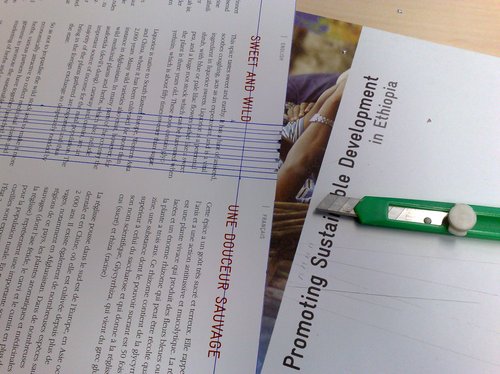
use some stronger paper from a calendar and cut out the desired size
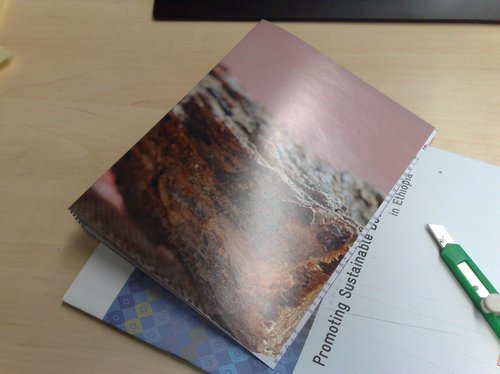
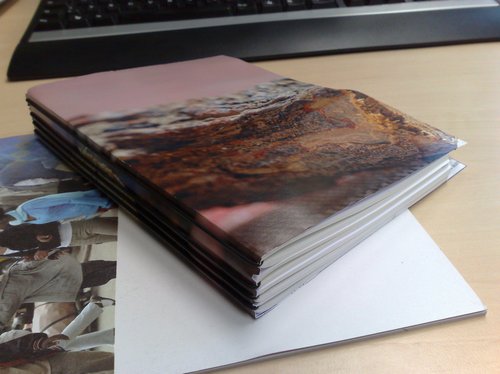
(in case you’re wondering: that’s an image of natural Liquorice on the cover – as mentioned, I’d taken a page from an office calendar :-)
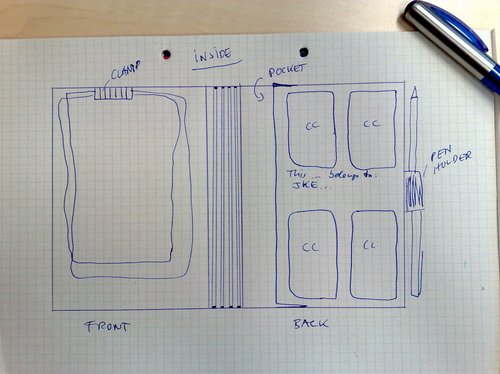
Yeah ok, this is what I want it to feature. Left: a clip for extra notes in A5 format, in the middle the four booklets (empty notes, address book, calendar 2009, 1st & 2nd part), and to the right: a small pouch for loose content and some business/credit/customer cards + a pen holder.

last page on the papered prototype (./. pen holder)

And look, even a CD fits in there!
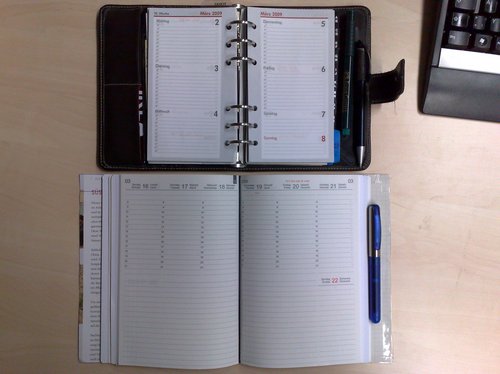
old vs. new
I’ve actually ordered a cover from X17 (which is yet to arrive) because my next step is to modify it according to the papered prototype above and add these little extras using the fabric I normally use (green canvas material from Kenya + some leftover parts from my grandmothers ball gown – aii, sijui about the latter one…).
Is there any other system you can recommend that fits into this scheme? Comments, please!
Thengiu muno.
[UPDATE] In part two of this post, I talk about the modifications I did to my X17 timer.
